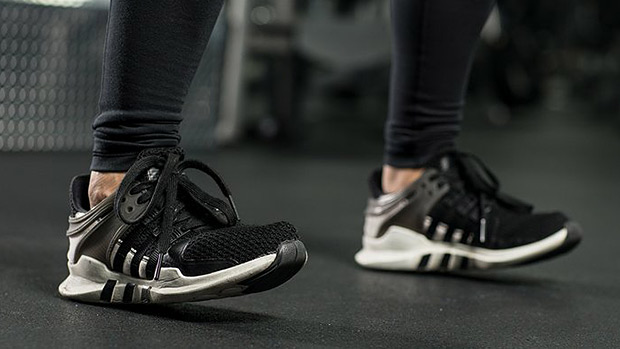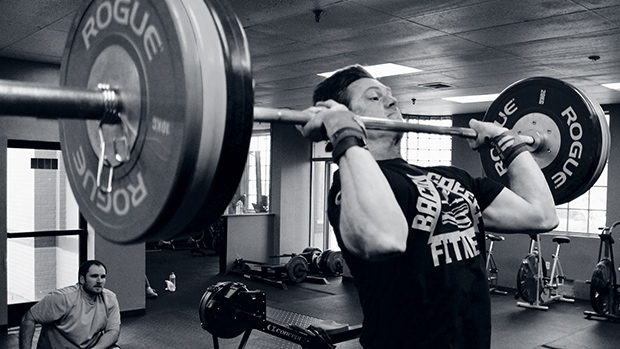I started with a new client recently and during our initial conversation he mentioned how, no matter what he did, squats had never felt great, particularly on his back. "All my previous coaches have attempted to fix things and nothing has ever stuck," he said.
I asked what these other coaches did to "fix" his squat and he unveiled a laundry list of stretching this, smashing that, performing a bevy of positional breathing drills while repeating the Elvish alphabet backwards, or otherwise what I refer to as being "corrective exercised to death." The next step was to get Dr. John Rusin to come in and perform a squat exorcism.
I did none of those things. Instead I did something revelatory: I watched him squat. And it wasn't pretty. Every rep was off-balance and I could sense his frustration.
- Me: "Do you always squat with your shoes on?"
- Him: "Yep."
- Me: "Can you take them off?"
He did and Sha-ZAM... what I saw punched me in the face. On every rep, his toes would come off the floor. Something no one would notice with shoes on.

This helped to explain why he'd always lose his balance, and why his back was flipping him the bird whenever he squatted.
What's Happening Here?
- When the toes come up, you lose what's called the "canister position" where the ribs are stacked on top of the pelvis, thus compromising a ton of core stability.
- When the toes come up, some lifters will have a tendency of "falling" into their lower back, overextending it. Lack of core integrity means you have to make up for it somewhere else, like the lower back.
- Ideally you want to think more about "foot pressure" – pushing into the floor with even weight distribution on the big toe/metatarsal, small toe, and heel.
- Cement the toes into ground; don't dig into the floor.
- Try to maintain even foot pressure throughout the set.
- Squat with your shoes off, at least for a little bit, to make sure you're able to keep the toes down.






